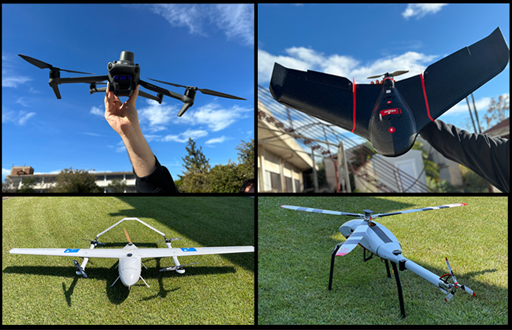2.2 The incubation stage
You will now look at the different stages of the introduction phase in the industry life cycle, in relation to the drone industry, beginning with the incubation stage. Each stage of industry growth gives different opportunities.
Box 1 shows the key actors involved, the knowledge developed at this stage and what would enable the move to the next stage. As you have seen for the photography drones, at this stage the main actors are scientists and inventors, and in some cases hobbyists.
Box 1 Incubation stage
Key actors:
- scientists
- user inventors
- legal system
Knowledge
- Technology: architecture components
- Demand: single product or service
- Institutions: eligibility for intellectual property rights
Jump to the next stage
- Is there enough knowledge for offering a commercial product?
- Yes: first commercialisation
- No: delay or abandon
Fruitful interactions between ‘technology developers’ (e.g. drone manufacturers) and users are key for the industry to grow beyond the stage of ‘incubation’. For example, in 2014–2016, drones began to be used for precision agriculture in the US. The drones were re-designed to meet the requirements of farmers (users) for specific farming tasks: field monitoring, crop spraying and so on. These tasks required drones with higher speeds, longer ranges and more endurance, and needed to be equipped with liquid sprayers and multi-spectral sensors. User needs were quite different to the needs of the aerial photographers, and the ‘drone gimbal’ needed re-adjusting. These changes in drone design, as shown in Figure 9, gave new meaning to their use (from ‘eye in the sky’ to ‘a hand in the sky’), and a new industry segment opened up.
Some of the initial entrepreneurs who helped develop this industry segment were farmers themselves, who had a deep understanding of the potential market and innovative ways to meet farmers’ needs. Note how Box 1 identifies the crucial role of ‘user inventors’, in this case the farmers, at the incubation stage. It’s also important to recognise the strong influence of regulation at this stage. For example, US laws first allowed the use of drones for spraying in 2012 with wide adoption allowed by 2016. In the EU, the legal frameworks governing the use of drones in agriculture are still being negotiated. Entrepreneurs may need to lobby to progress regulations and legitimise the use of drones for precision agriculture in the EU.
.png)
